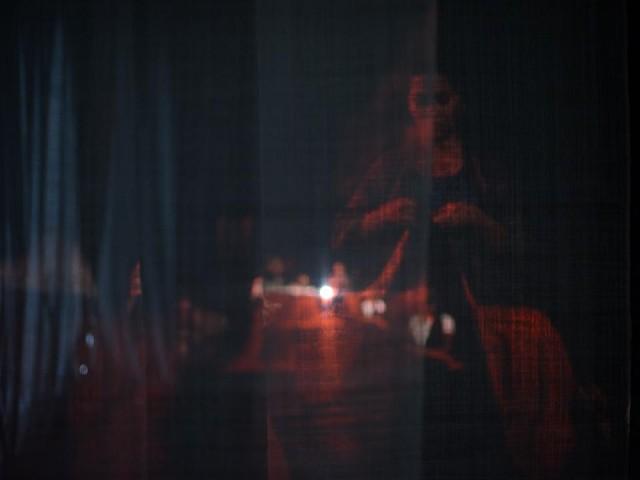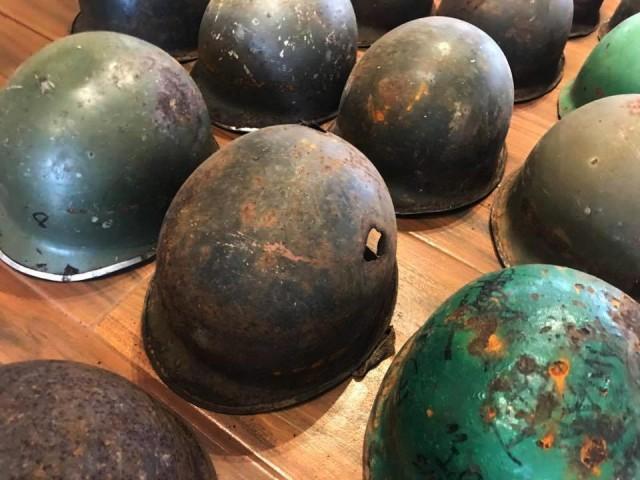Manila Biennale 2018 brings exceptional artworks to historic Intramuros
The cobblestone roads of Intramuros will always be inviting for both locals and tourists alike. Adding charm to it this National Arts Month is the inaugural Manila Biennale.
Art installations are scattered across the gardens, plazas, museums, halls and chambers of the walled city. Fort Santiago, Plaza Roma, Baluarte San Diego, Puerta Real and Casa Manila will be open to the general public with the current entrance fees of P75 for adults and P50 for students throughout biennale month.
Additionally, the Intramuros Administration is offering free admission to Fort Santiago, Casa Manila, and Baluarte de San Diego on February 3 and at Fort Santiago and Casa Manila on February 4.
The Open Weekend features art exhibitions, artists' market, food stalls, open picnic, and performances.
Manila Biennale offers a passport for visitors in order to attend exclusive events and special performances; however, some venues have limited seating capacity. Still, the public artworks on display are more than enough reason to schedule a visit.
Art and history at the Jesuit Mission House
The pieces at San Ignacio Church and the Jesuit Mission House alone offer a rich experience for visitors. The exhibit opens with Roberto Chabet and, curiously, it only gets better from there. His piece, "Onethingafteranother", is surrounded by lightboxes with religious iconography by Jason Dy titled "Procesion los Camareros."
With the tone set, guests move to the neighboring Jesuit Mission House where bits and pieces of Philippine history are interpreted through different lenses.
Elnora Ebillo's "WatAwat" (2018) is a notable installation. In an enclosed space, a video of women weaving is projected on textile — an acknowledgement of the "courage and tenacity" of women and their part in nation building.

Gerardo Tan's experiential work "Sear to Open" (2018) is another must-see. Planks of wood are propped up to form a narrow tent and a motion-activated light provides a five-second flash as a guest walks into the space.
The fading light is meant to "induce a feeling of dread" and simulates the bright flash seen by the civilians who were "seared and reduced" into "negative shadows" when the atomic bomb was dropped in Nagasaki and Hiroshima.
A flight up is "Hindi Kevlar" (2018) by Pete Jimenez, which is a straightforward presentation of helmets from various wars. One particular helmet stands out — pierced with a bullet clean through.
One can only imagine what happened to the person wearing this helmet and the final moment of horror felt by the victims of the Nagasaki and Hiroshima bombing and we are reminded, as we always should be, of the real cost of war.

Renz Baluyot's work might be of particular interest to a generation whose lives have not been affected directly by the war. Whereas Japan was once a feared enemy, our relationship with them has been more than friendly and their culture is embraced by many here.
During his residency in Japan, Baluyot had an encounter with a Japanese man who felt the need to apologize to him about the atrocities committed during World War II. A guide for the biennale told this writer that the six pieces presented by Baluyot were his way of making sense of this incident as a millennial.
Hikari Fujii's "Record of the Bombing" is a poignant compliment to Baluyot's piece. Inside a room are empty glass cases with descriptions of what was meant to be on display.
There were plans to build a memorial hall in Tokyo in the '90s, but the artifacts — 5,040 documents and materials related to the war, including video testimonies by 330 individuals — have been packed away in wooden boxes.
Many lives were lost and in Fujii's artist note, he said that the war is a blank for him, but he found courage to create this exhibit while "imagining each of the indiscriminate deaths caused by bombing campaigns."

Manila Biennale has more to offer, but these alone showcase the power of art to capture complex historical events and persuade us to reflect on what was before to address the now.
Outdoor art, inward thoughts
Visitors are encouraged to explore the nooks and look for the public art in other locations in Intramuros.
Oca Villamiel's "Children of War" (2018) at Fort Santiago is a striking exhibit found in a dungeon. It stands on its own, almost like a solo show, featuring scavenged objects cramped in cages.
War, in this case, is not limited to armed conflict. The artist also comments on the "dispossession and loss of innocence" felt by many due to the various crises afflicting the country.
"Thirty Thousand Liters" by Felix Bacolor at first glance seems perplexing. Bright blue metal drums are stacked on wooden pallets. These drums, 150 of them, have a combined capacity of 30,000 liters — as the title suggests — and is "a commentary on the bloodshed from the current wars in the Philippines.
A person, the artist estimates, needs five liters of blood to live and the amount represented by the drums is a monument to the "systemic, industrial purging" happening currently.

Also at Fort Santiago are "Lady Liberty" by Kawayan de Guia, "Angel of Death" and "Bronze Bullets" by Agnes Arellano, "Walang Boots" by Pete Jimenez, and "Kaming Mga Busabos: Ang Kundiman ni Mariano Dimalanta" by Boni Juan among others.
Manila Biennale 2018's program includes Open Markets Weekends, an official cinema program curated by Ramon Nocon, an LGBT short film showcase, a masquerade ball, and more.
Detailed information about the events is available at the Manila Biennale official website.
Manila Biennale 2018 runs from February 3, 2018 to March 5, 2018. Follow Manila Biennale and Intramuros Administration on Facebook for updates and ticket information. — LA, GMA News



